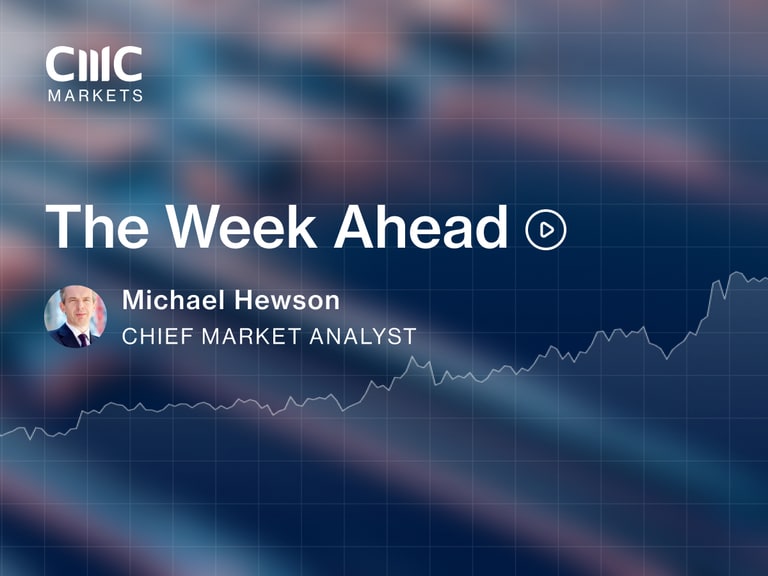
AI-Driven Euphoria vs. Recession Risk. How will the Fed guide Wall Street’s further movement?
The AI-powered tech rally defended a recession fear-led selloff on Wall Street, with the Nasdaq climbing 7%, the S&P 500 up 1%, and Dow down 3% in May.
However, the only sectors that finished higher for the month were the three AI-related components, including technology (XLK), communication services (XLC), and consumer discretionary (XLY), up 10%, 5%, and 4%, respectively.
All other 8 sectors ended in the red, with energy stocks, for example, tumbling 8.5% monthly. The extremely divergent moves among sectors imply that the AI-driven euphoria may be in a hype cycle.
According to Factset, the blended earnings for the S&P 500 declined for the second straight quarter in Q1 2023, and the forward 12-month P/E ratio was below the 5-year average by 1 June.
While a pause in rate hikes by the Fed might be a done deal in June, the inflation data for May will be critical to determine risk sentiment as economic data points to a further slowdown in GDP growth. Investors may need to be mindful of a possible correction on Wall Street in June.
Australian markets faced China’s headwind, with commodity price a key gauge for the ASX trajectory
The ASX 200 fell 3% in May, with the copper price falling 5% and crude oil down about 6%.
The commodity-heavy index did not follow through with the tech rally on Wall Street as its biggest export partner, China’s, economic rebound is sluggish. Recession, fear-led selloff in consumer and financial stocks in the US markets also dragged on the sentiment.
At the sector level, information technology was the best performer, up 16% in the month, while both financials and consumer discretionary fell more than 5%.
In Australia, the inflationary pressure showed signs of easing, but the consumer price index was still well above the RBA’s target level of 2%.
There will be three elements that potentially impact ASX’s trajectory in June - commodity prices, China’s economic playout, and the RBA’s rate decision. A positive scenario is that Fed’s potential rate hike pause could send the USD lower and lift commodity prices. Potentially, the RBA will follow suit to suspend a rate hike cycle this month. China’s rebound may be set to pick up if the government imposes further stimulus measures.
Chinese stock markets may have been oversold, with influential economic data to be eyed in June
The Chinese stocks touched a bear market, with Hang Seng Index down 4.6% and Hang Seng China Enterprises Index down 6.2% year-to-date amid faltering economic recovery as the weak domestic demands and a surge in the youth unemployment rate reined in consumer prices, with the country’s CPI deflated for the third month in April.
On a positive note, is that China’s exports saw a sharp rebound from a year ago, while economic activities in the services sector expanded for the 5th consecutive month, which could be translating into a slow recovery in consumer demand.
Any positive signs in the economic recovery could cause a dip-buy in the possible oversold markets. The recent AI development in Chinese tech companies, such as Alibaba and Baidu could also lead to bottomer reversal moves in these shares. In June, influential economic data such as CPI, PPI, and Chinese manufacturing PMI will be key gauges of the country’s rebounding trajectory.
The New Zealand dollar suffered from RBNZ’s dovish rate hike, with the first quarter GDP in focus
The RBNZ raised the OCR by another 25 basis points but signalled a rate hike pause in the next meeting, which crashed the New Zealand dollar.
The NZD/USD fell about 6% from the high of 0.6369 to the month-low of just above 0.60 in May. Whilst the NZD/AUD slumped 2.3% from the peak in the month.
The decline in the dollar may not end just yet as China’s sluggish economic rebound may keep pressing on the commodity currencies, with an absence of the RBNZ’s policy meeting in June. The country’s first-quarter GDP will be in the spotlight, and a negative read of the data will mark a technical economic recession following a -0.6% growth in the final quarter of 2022.
Will the OPEC + save oil’s price from a further slump?
Crude oil prices fell under US$70 per barrel in May but swiftly rebounded in the beginning of June as traders bet the OPEC+ to cut outputs further to stabilize the oil markets.
The organization announced a production cut of 2 million barrels per day in November and a further 1.15 million barrels per day in April.
Fundamentally, China’s oil demand will still be key to driving the energy market prices. US$60 dollar is likely to be a pivotal support, and US$80 could be a potential price target if OPEC+ determines to support the oil prices.
Gold faces resistance of an all-time high level
Gold pulled back from an all-time high as the AI stock euphoria boosted risk-on sentiment, and the USD strengthened following a rebound in the US bond yields in May. But the precious metal started climbing again in the last few trading days as the king dollar softened on the Fed’s hiking pause bets.
A dovish Fed will most likely send the USD lower and give a further lift to gold prices. However, from a technical perspective, a double top in the daily chart and a triple top in the monthly charts are still in play.
Disclaimer: CMC Markets is an execution-only service provider. The material (whether or not it states any opinions) is for general information purposes only, and does not take into account your personal circumstances or objectives. Nothing in this material is (or should be considered to be) financial, investment or other advice on which reliance should be placed. No opinion given in the material constitutes a recommendation by CMC Markets or the author that any particular investment, security, transaction or investment strategy is suitable for any specific person. The material has not been prepared in accordance with legal requirements designed to promote the independence of investment research. Although we are not specifically prevented from dealing before providing this material, we do not seek to take advantage of the material prior to its dissemination.























